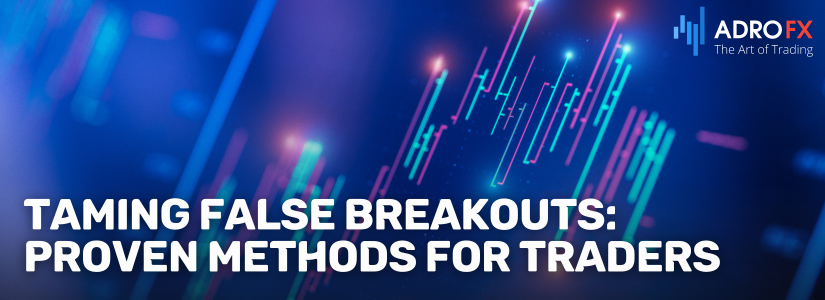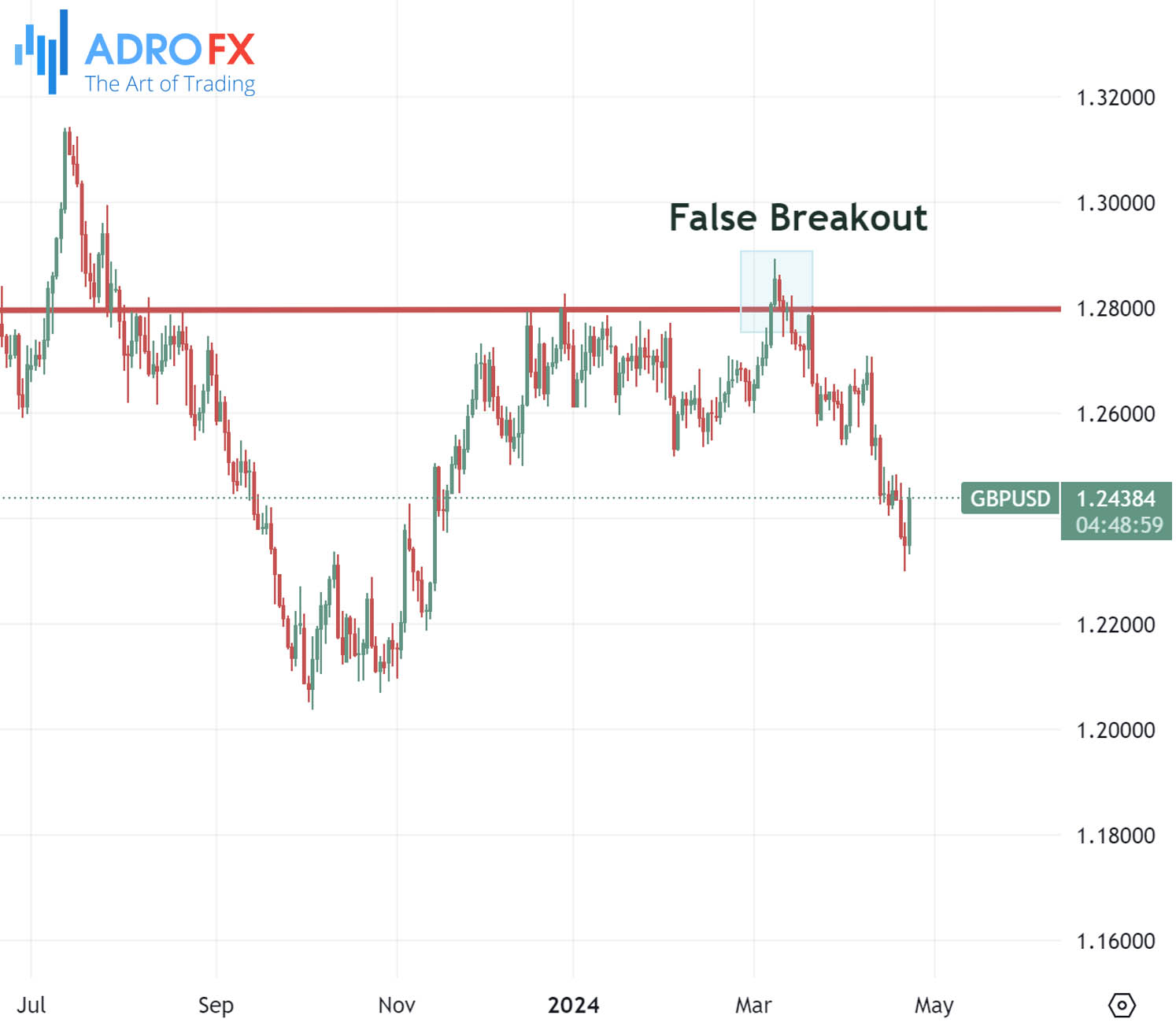Taming False Breakouts: Proven Methods for Traders

A false breakout pattern is a common occurrence in trading that can lead to significant losses if not properly identified and managed. These patterns occur when the price of an asset appears to break out of a key level of support or resistance, only to quickly reverse direction, trapping traders who entered the market based on the breakout signal. In this article, we will explore the importance of understanding false breakout patterns and provide strategies for identifying, avoiding, and handling them effectively.
Understanding False Breakouts
False breakout occurrences involve deceptive price movements that create the illusion of a breakout from a significant support or resistance level, only to promptly reverse direction. These deceptive movements manifest in various forms, including bull traps, bear traps, and head fakes. Bull traps ensue when the price surpasses a resistance level, attracting bullish traders, yet swiftly retreats below the resistance, ensnaring traders in unprofitable positions. Conversely, bear traps materialize when the price plunges below a support level, enticing bearish traders to enter the market, but promptly surges back above the support, ensnaring traders in unfavorable positions.

Multiple elements contribute to the emergence of false breakouts, with market volatility and liquidity playing pivotal roles. Elevated volatility levels heighten the likelihood of false breakout signals, as swift price fluctuations can trigger Stop Loss orders, resulting in abrupt reversals. Similarly, diminished liquidity exacerbates false breakouts, as sparse trading conditions enable market manipulators to push prices past critical support or resistance levels before executing a reversal. Proficiency in recognizing these factors is essential for traders seeking to evade the perils of false breakout signals and mitigate potential losses.
Identifying False Breakouts
Effectively spotting false breakout patterns requires traders to utilize a variety of technical indicators and tools. Support and resistance levels serve as fundamental tools for pinpointing potential breakout points, representing zones where price movements historically encounter obstacles. By vigilantly monitoring these levels, traders can anticipate breakout signals and remain vigilant for potential false breakouts.
Trendlines offer another valuable tool for identifying false breakout patterns. Drawing trendlines along the peaks and troughs of price movements assists traders in discerning the trend's direction and pinpointing potential breakout points. When a breakout occurs, traders can evaluate whether it aligns with the trendline or if it's likely a false breakout.
Volume analysis plays a critical role in detecting false breakout patterns. Breakouts accompanied by low trading volume often serve as a warning sign of a false breakout. Conversely, breakouts supported by robust trading volume are more likely to be genuine. By closely monitoring volume levels, traders can differentiate between authentic and false breakout signals.
Several characteristics are common among false breakout candles, including long wicks and low trading volume. Lengthy wicks suggest that the price briefly surpassed a significant support or resistance level before swiftly retracting, indicating a false breakout. Additionally, low trading volume during a breakout signal reflects a lack of conviction among market participants, further confirming the potential for a false breakout.
Utilizing multiple confirmation signals is vital for validating breakout signals and evading false breakouts. Traders can seek confirmation from other technical indicators, such as moving averages or oscillators, to affirm the legitimacy of a breakout signal. By awaiting multiple confirmation signals, traders can diminish the risk of succumbing to false breakout patterns.
Avoiding False Breakouts
To mitigate the risk of trading false breakout patterns, traders can implement several strategies. One approach is to await confirmation before entering a trade. Rather than entering a trade immediately after a breakout occurs, traders can await for the price to close above or below the breakout level to validate the breakout signal. This strategy helps avert premature entries and decreases the likelihood of trading based on false breakout signals.
Establishing proper Stop Loss orders is another pivotal strategy for sidestepping false breakouts. By situating Stop Loss orders below support levels for long trades or above resistance levels for short trades, traders can restrict potential losses if a false breakout materializes. Furthermore, setting trailing Stop Loss orders can safeguard profits and minimize losses if the price swiftly reverses the post-breakout signal.
Exercising patience and discipline is paramount in avoiding false breakouts. Traders should resist the urge to engage in trades based on premature breakout signals and instead await confirmation before taking action. By exercising patience and discipline, traders can deter overtrading and diminish the probability of pursuing false breakout signals that lead to losses.

Handling False Breakouts
When confronted with false breakouts, traders must deploy effective techniques to manage their trades and minimize losses while safeguarding their capital. One such technique involves adjusting Stop Loss orders to contain potential losses if the breakout signal turns out to be false. By shifting Stop Loss orders closer to the entry point or modifying them based on critical support and resistance levels, traders can mitigate the impact of false breakout trades on their overall profitability.
Another method for handling false breakout trades is scaling out positions. Instead of closing the entire position simultaneously, traders can opt to partially exit their trades as the price moves in their favor. This enables traders to secure profits while still allowing room for additional gains if the breakout signal ultimately proves authentic. Scaling out positions can effectively alleviate the impact of false breakouts on overall trading performance.
Critical to managing false breakouts is evaluating the market context and adapting to evolving conditions. Traders must take into account factors such as market volatility, liquidity, and macroeconomic news events that may influence price movements. By remaining well-informed and flexible in their trading approach, traders can adeptly navigate turbulent market conditions and respond adeptly to false breakout signals.
Learning from past false breakout trades is imperative for refining future decision-making. Traders should regularly review their trades and delve into the reasons behind false breakout signals. By identifying recurring patterns and trends in their trading history, traders can glean valuable insights and develop more effective strategies for identifying and managing false breakout patterns in the future.
Case Studies and Examples
Examining real-life instances of false breakout patterns across diverse markets offers invaluable insights into how these patterns unfold and how traders can adeptly manage them. For instance, in the forex market, a false breakout may manifest when the price briefly surpasses a key support or resistance level before swiftly reversing course. By scrutinizing historical price data, traders can pinpoint patterns and trends associated with false breakout signals.
In the stock market, false breakout patterns may arise during periods of heightened volatility or around pivotal earnings announcements. Analyzing past instances of false breakout trades in stocks enables traders to grasp the contributing factors and devise effective strategies for managing such trades.
Similarly, within the cryptocurrency market, false breakout patterns may emerge when the price of a digital asset momentarily breaches a significant technical level before retracing. Traders can scrutinize historical price charts and market data to discern common patterns and trends associated with false breakout signals in cryptocurrencies.
By delving into real-life examples of false breakout patterns across various markets, traders can glean valuable insights into the intricacies of false breakout trades and craft proficient strategies for managing them within their own trading portfolios.
Conclusion
In summary, false breakout patterns pose a common challenge in trading, potentially resulting in substantial losses if not effectively identified, avoided, and managed. Throughout this discourse, we've delved into the definition of false breakouts, the diverse types, and the contributing factors, alongside strategies for adeptly identifying, circumventing, and addressing these patterns.
Mastering the skill of recognizing false breakouts is pivotal for traders, as it can prevent costly errors and enhance overall trading performance. Utilizing technical indicators and tools such as support and resistance levels, trendlines, and volume analysis empowers traders to discern false breakout signals with greater precision, enabling more informed trading decisions.
Avoiding false breakouts demands patience, discipline, and the capacity to await confirmation before initiating trades. Implementing proper Stop Loss orders and refraining from overtrading serve to mitigate the risk associated with false breakout patterns. Furthermore, adapting to evolving market conditions and drawing insights from past trades are indispensable for sustained progress and success in trading endeavors.
In conclusion, traders are urged to persist in learning and honing their craft to refine their trading acumen continually. By remaining abreast of market developments, maintaining discipline, and consistently refining their skills, traders can adeptly navigate the intricacies of financial markets and realize their trading objectives.
About AdroFx
Established in 2018, AdroFx is known for its high technology and its ability to deliver high-quality brokerage services in more than 200 countries around the world. AdroFx makes every effort to keep its customers satisfied and to meet all the trading needs of any trader. With the five types of trading accounts, we have all it takes to fit any traders` needs and styles. The company provides access to 115+ trading instruments, including currencies, metals, stocks, and cryptocurrencies, which make it possible to make the most out of trading on the financial markets. Considering all the above, AdroFx is the perfect variant for anyone who doesn't settle for less than the best.










